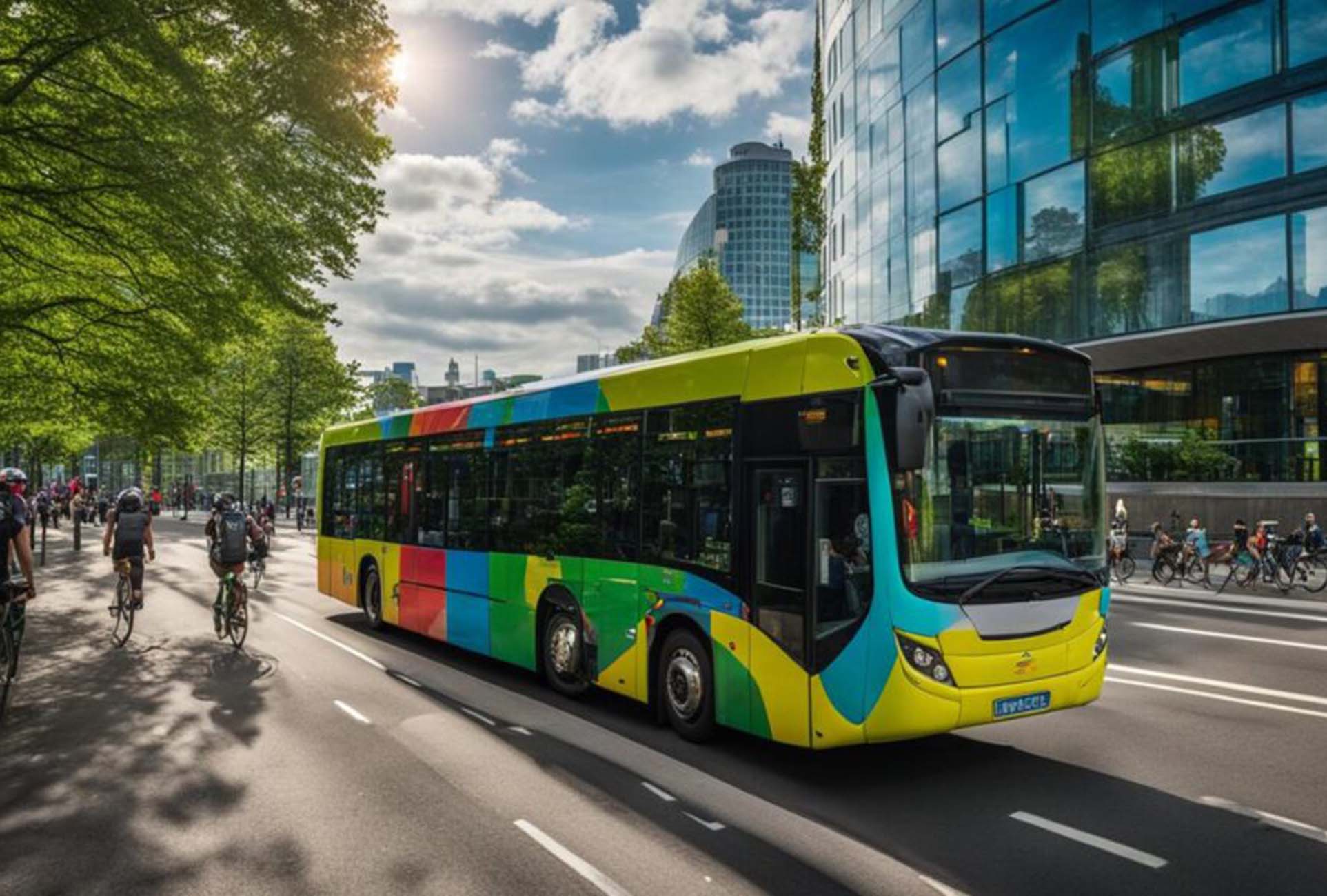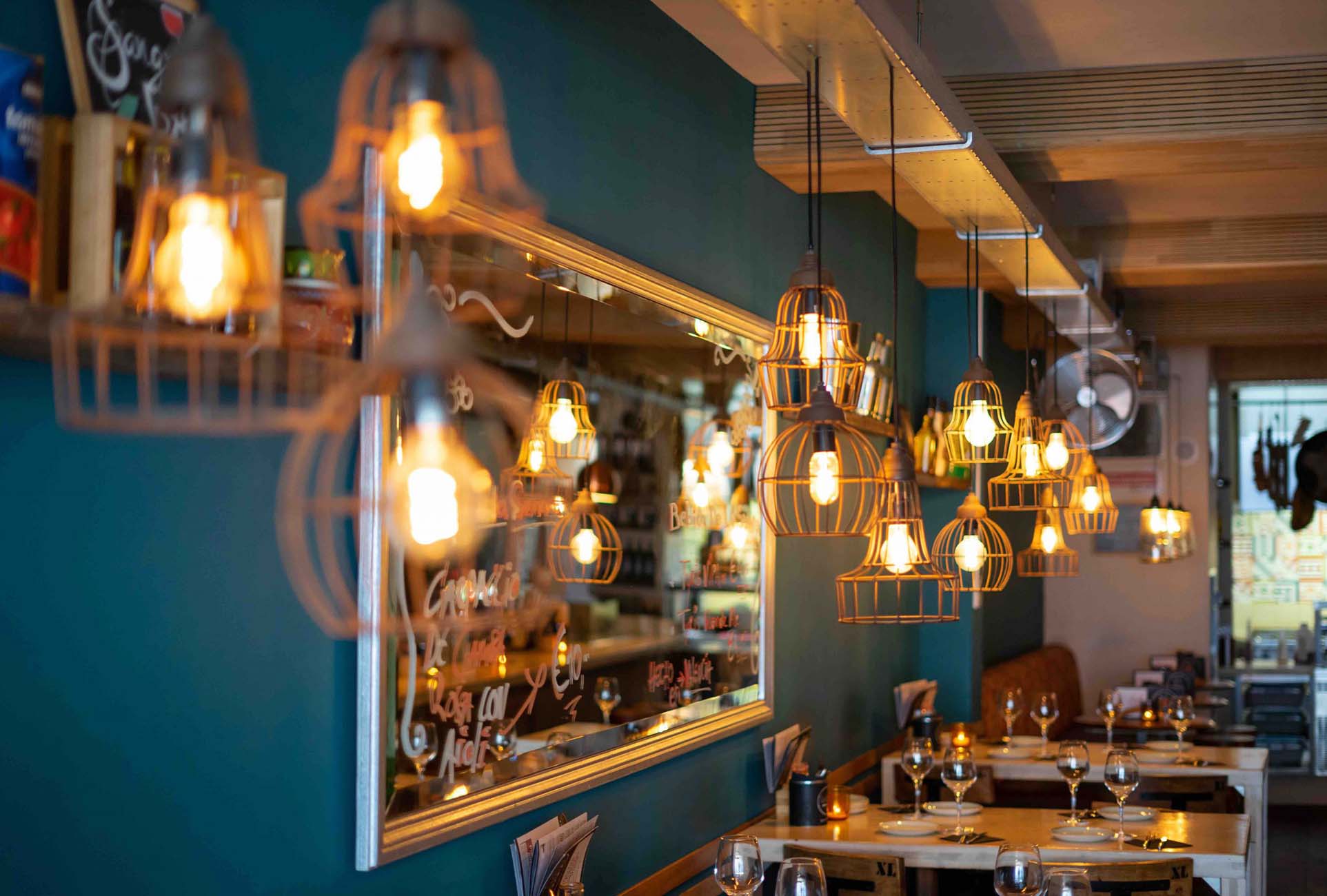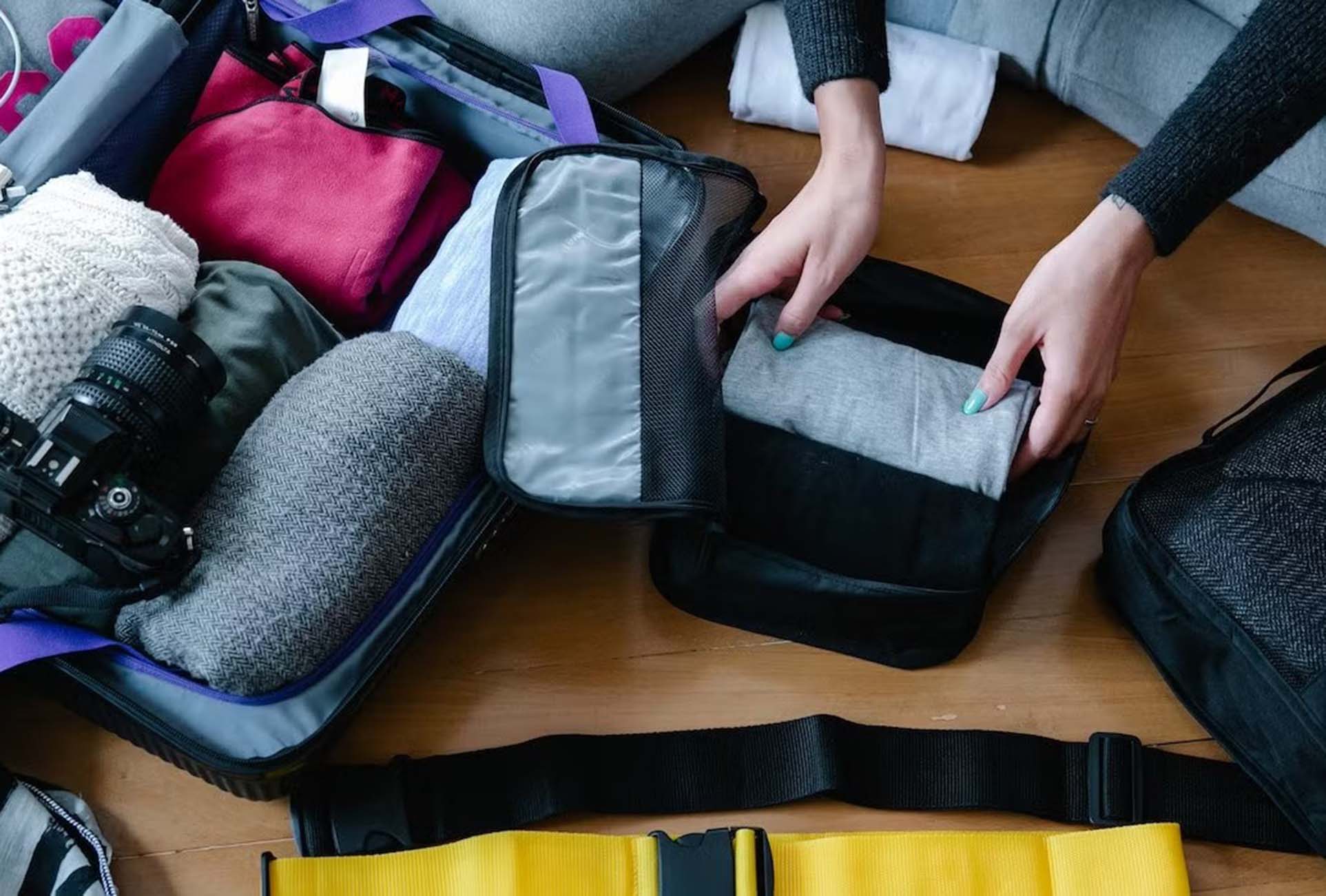Rotterdam, the second-largest city in the Netherlands, is known for its striking modern architecture, vibrant cultural scene, and rich maritime history. Whether you’re in town for a weekend getaway, a business trip, or a longer stay, one thing is certain—you’ll need an efficient way to get around. Luckily, Rotterdam’s public transport system is highly developed, affordable, and easy to use.
In this guide, I’ll walk you through everything you need to know to navigate Rotterdam’s public transport like a pro. From buses and trams to water taxis and bikes, this guide will help you explore every corner of the city with ease.
Rotterdam’s Public Transport System
Rotterdam’s public transport system is operated by RET (Rotterdamse Elektrische Tram), which manages the city’s metro, tram, and bus networks. You can also travel around the city using water taxis, ferries, and even bicycles—each mode of transport offering a unique way to experience the city.
The most common ways to get around Rotterdam are:
- Metro – The fastest way to cover large distances.
- Tram – Ideal for city center and sightseeing routes.
- Bus – Convenient for neighborhoods outside the city center.
- Water Taxi – A scenic option for those wanting to explore Rotterdam’s waterways.
- Bicycles – The quintessential Dutch way to get around.
Let’s break these down and take a closer look at each option.
1. Rotterdam Metro: Fast and Efficient
Rotterdam’s metro system is one of the quickest and most reliable ways to get around the city, especially if you’re traveling to outer districts or nearby towns.
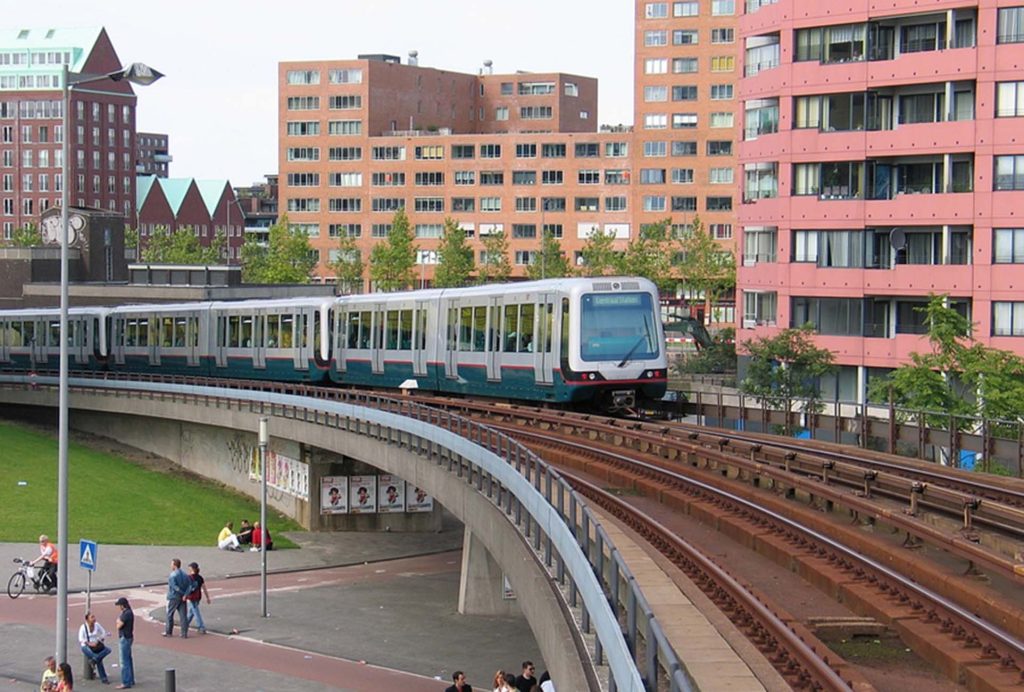
Metro Lines:
The metro has five lines identified by letters: A, B, C, D, and E. Here’s what you need to know about them:
- Lines A, B, and C connect the east and west parts of Rotterdam, running through key stops like Blaak and Beurs.
- Lines D and E take you to the north and south of the city. Line E connects Rotterdam with The Hague, making it ideal for day trips.
Key Metro Stations:
- Rotterdam Centraal: The city’s main train station and metro hub.
- Beurs: A major metro and tram interchange in the city center, perfect for reaching many tourist spots.
- Blaak: Located near the famous Markthal and Cube Houses.
How to Use the Metro:
- Tickets and Payment: You’ll need an OV-chipkaart, which is a contactless card used on all public transport in the Netherlands. You can buy an anonymous OV-chipkaart at metro stations or at many shops and kiosks. For short stays, disposable tickets are available at machines in most metro stations.
- Pricing: A one-hour trip within Rotterdam costs around €4, but day passes are available for around €9, allowing unlimited travel on RET metro, buses, and trams for 24 hours.
Pro Tip:
If you’re traveling beyond Rotterdam’s city limits, such as to The Hague or Schiedam, the metro is the fastest option. Line E, known as the RandstadRail, connects Rotterdam with other cities in the Randstad region.
2. Trams: The Best Way to Sightsee
Rotterdam’s trams are one of the most pleasant ways to explore the city. With 10 tram lines crisscrossing the city, trams can take you through both the central and suburban areas.
Why Take the Tram?
- Trams are perfect for sightseeing: They offer a street-level view of the city, and many of the key tourist attractions are located along tram lines.
- Frequent Stops: Trams stop frequently and cover a large portion of Rotterdam, making them convenient for short distances or leisurely trips.
- Eco-Friendly: Trams run on electricity, making them a greener option.
Popular Tram Lines for Tourists:
- Tram Line 7: This line takes you from Rotterdam Centraal, past the Museumpark, and all the way to the famous Euromast tower.
- Tram Line 8: For those visiting the historic Delfshaven district, Line 8 is ideal. It also passes the Erasmus MC, making it useful for those visiting the medical center.
- Tram Line 24: This route connects Rotterdam Centraal with the iconic Erasmus Bridge and Kop van Zuid, one of the city’s most modern neighborhoods.
How to Use the Tram:
Just like with the metro, you’ll need an OV-chipkaart or a disposable ticket to ride. Don’t forget to check in and out when you board and alight from the tram. Trams run frequently—every 10-15 minutes during peak hours, with slightly longer intervals during the evening.
Pro Tip:
If you’re staying in the city center and don’t want to deal with the metro’s underground nature, trams are an excellent way to move around while still enjoying Rotterdam’s architecture and street life.
3. Buses: Convenient for Suburban Travel
While buses are less popular with tourists staying in the city center, they’re essential for reaching neighborhoods that are farther from the metro or tram lines. Buses are especially useful if you’re heading out to districts like Overschie or Kralingen.
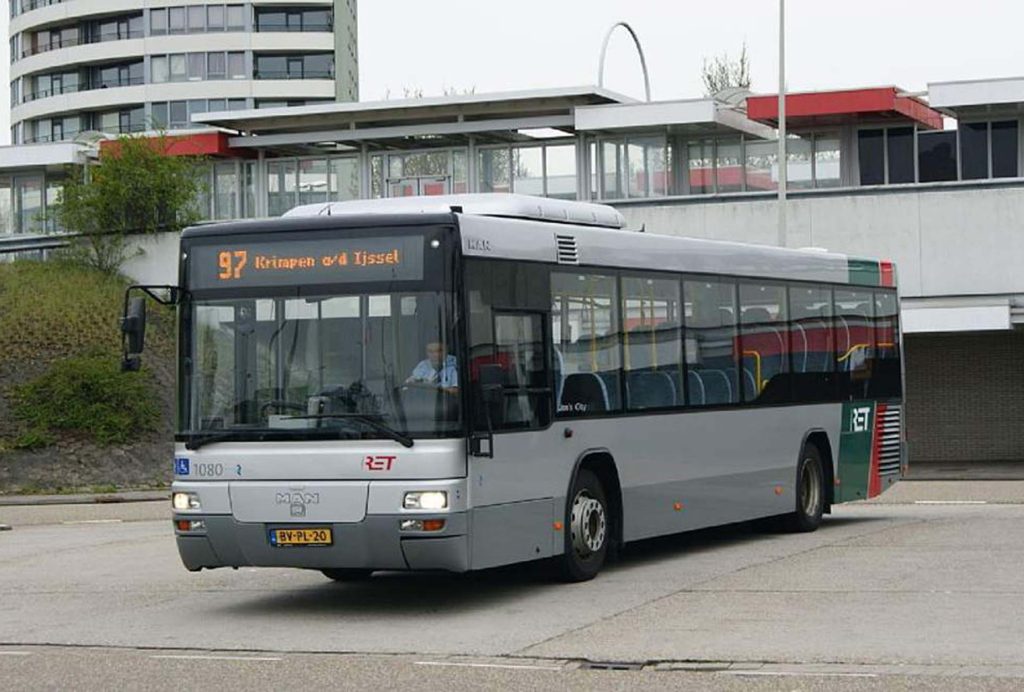
Popular Bus Routes:
- Bus 33: From Rotterdam Centraal to Rotterdam The Hague Airport (RTM), this bus is the most convenient way to reach the airport.
- Bus 44: Connects the city center with Het Park, a beautiful park surrounding the Euromast.
- Bus 38: Runs between Rotterdam Blaak and Delfshaven, offering an easy way to visit the old harbor area.
How to Use the Bus:
Using buses in Rotterdam is straightforward. Just like trams and metros, buses require you to check in and out with your OV-chipkaart. Bus schedules are easy to follow, and the buses are comfortable, with digital displays indicating the next stop.
Pro Tip:
If you’re visiting Rotterdam’s outskirts or staying in a neighborhood far from the city center, buses provide a convenient and comfortable mode of transport. They’re also less crowded than trams during rush hour.
4. Water Taxis: A Unique and Scenic Option
Given Rotterdam’s extensive waterways, it’s no surprise that water taxis are a popular mode of transport. They’re fast, exciting, and offer stunning views of the skyline and bridges.
Why Take a Water Taxi?
- Unique Experience: There’s no better way to see the city from the water. It’s an exhilarating ride and gives you a new perspective on Rotterdam’s iconic architecture, including the Erasmus Bridge and Kop van Zuid.
- Fast: Water taxis are one of the quickest ways to travel between points on the Maas River, especially during peak traffic hours when the roads can get congested.
- Multiple Stops: Water taxis have over 50 stops around the city, including tourist hotspots like Hotel New York, Erasmusbrug, and Veerhaven.
How to Use the Water Taxi:
You can either hail a water taxi on the spot or book one in advance through the Water Taxi Rotterdam app or website. Fares vary depending on distance, starting at around €4.50 for a short ride.
Pro Tip:
For a memorable experience, consider taking a water taxi at sunset. The city’s skyline looks especially stunning at this time of day, and you’ll get unbeatable photo opportunities.
5. Biking: The True Dutch Way
No guide to Rotterdam’s public transport would be complete without mentioning bicycles. The Netherlands is world-renowned for its cycling culture, and Rotterdam is no exception. With its wide, dedicated bike lanes, cycling is one of the easiest, healthiest, and most enjoyable ways to get around the city.
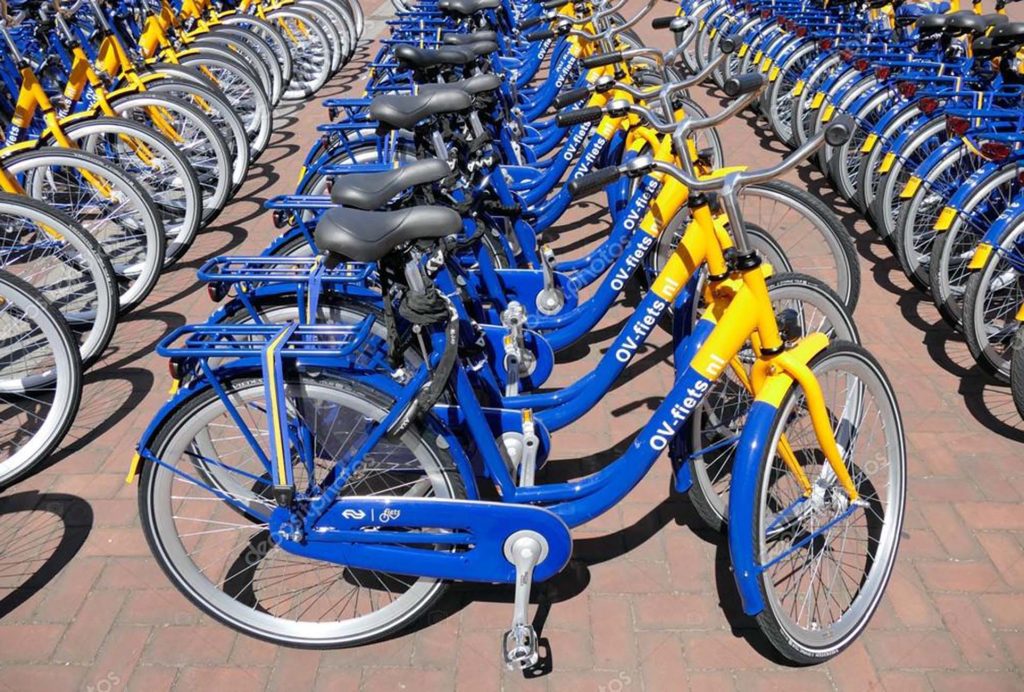
Where to Rent a Bike:
- OV-fiets: If you already have an OV-chipkaart, you can rent a public bike from any train station in the Netherlands for around €4 per day. It’s a great option for short rides around the city.
- Private Bike Rentals: There are plenty of bike rental shops around Rotterdam, particularly near Rotterdam Centraal and major tourist areas like Blaak and Kop van Zuid.
Cycling Routes:
- Rotterdam to Kinderdijk: This picturesque route takes you through the countryside, ending at the famous Kinderdijk windmills, a UNESCO World Heritage site.
- Rotterdam City Tour: Explore the city’s major landmarks by bike, including the Markthal, Cube Houses, and the riverside views along Maasboulevard.
Pro Tip:
Remember that Rotterdam is a busy city, so always stay in the designated bike lanes and follow traffic signals. Helmets aren’t mandatory in the Netherlands, but wearing one is recommended for safety.
6. Traveling Beyond Rotterdam: Trains
Rotterdam’s central location in the Netherlands makes it an ideal base for day trips. The city is well-connected to the national rail network, and trains are a fast and convenient way to explore other Dutch cities.
- To Amsterdam: Trains between Rotterdam and Amsterdam run frequently, taking about 40-60 minutes depending on the type of train. The high-speed Intercity Direct is the fastest option.
- To The Hague: You can reach The Hague in just 20 minutes by train. Perfect for a short day trip to see the Dutch Parliament or visit Scheveningen Beach.
- To Delft: A 15-minute train ride will take you to the charming city of Delft, famous for its blue pottery and beautiful canals.
How to Use the Train:
You can buy train tickets at NS (Nederlandse Spoorwegen) ticket machines at any station, or use your OV-chipkaart to check in and out at the train gates.
Navigating Rotterdam’s public transport is a breeze once you know your options. Whether you’re zipping around the city on the metro, taking a leisurely tram ride, cruising across the Maas on a water taxi, or pedaling through the streets, Rotterdam’s well-organized network ensures you can explore every corner of this fascinating city with ease.
